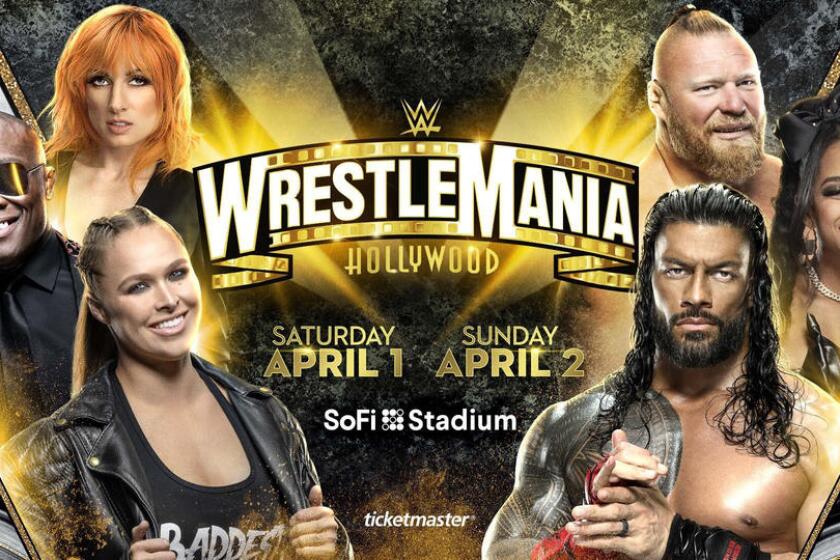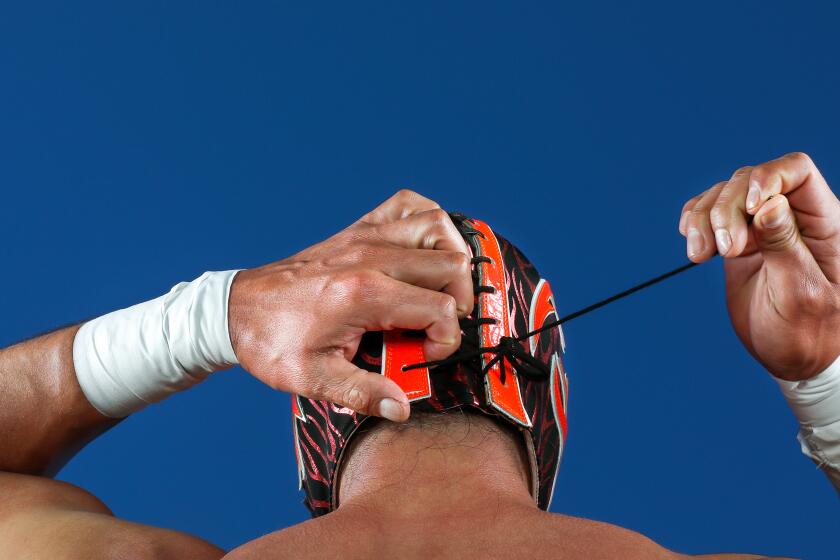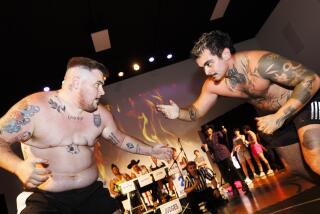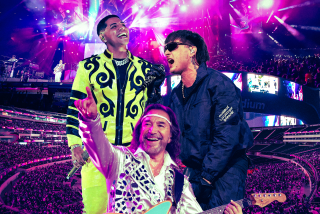‘We do it all: comedy wrestling, lucha libre.’ How Japanese indie talent is commanding WrestleMania weekend
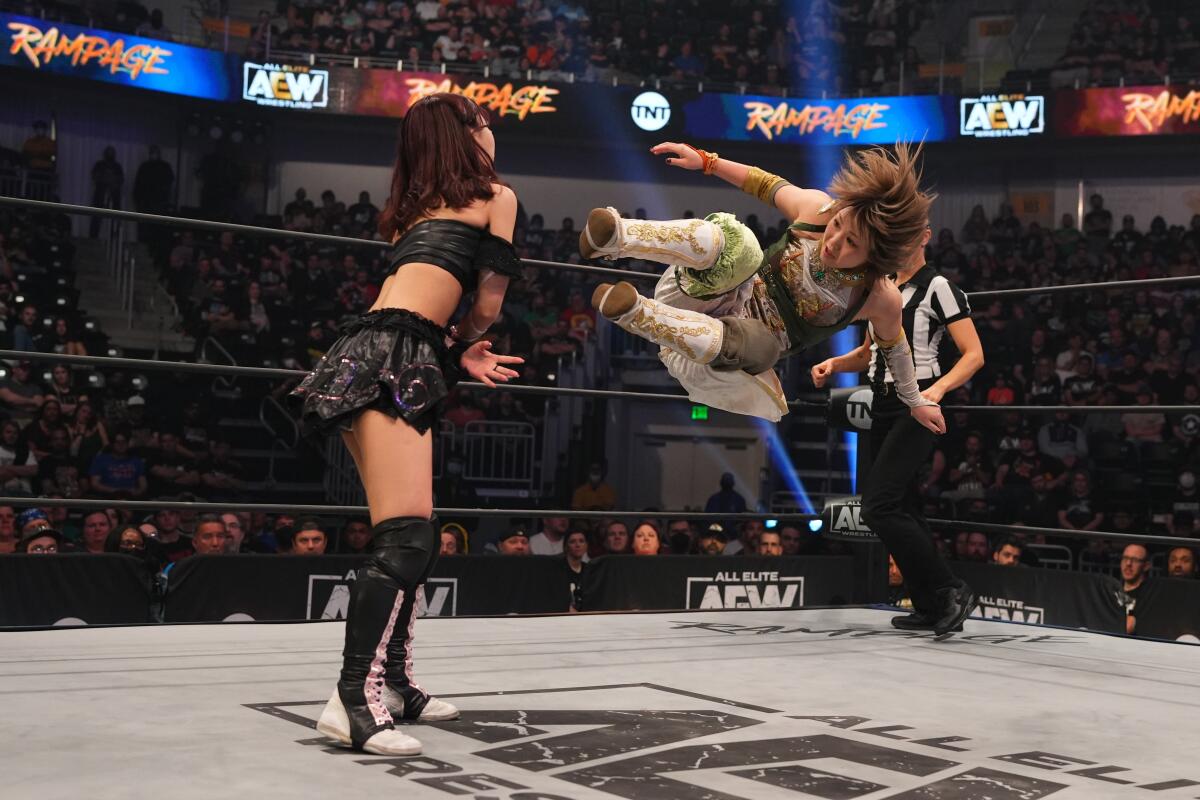
- Share via
The ecosystem of indie wrestling shows running alongside WWE’s annual Wrestlemania has become a tradition. It’s a time rife with opportunities for wrestlers, with plenty of work to go around and the chance to connect with fans more directly — it’s even become protocol for countless wrestlers from overseas to book their American tours around Mania Weekend. As Los Angeles continues transforming into a worldwide showcase for the richness and diversity of wrestling, this year fittingly features a bevy of international talent, particularly for practitioners of Japanese wrestling.
One of this weekend’s major events involves a direct collaboration between American and Japanese promotions: Thursday night’s IMPACT and New Japan Pro Wrestling’s “Multiverse United” at the Globe Theater, which brought together major Japanese stars such as Hiroshi Tanahashi and KENTA, along with North American indie darlings such as “Speedball” Mike Bailey and Lio Rush. Prestige Wrestling’s “Nervous Breakdown,” on Friday night, which features legends such as Aja Kong — one of the most celebrated women to step foot inside the ring — and up-and-coming talent such as powerhouse bruiser Shigehiro Irie will also take the Globe stage.
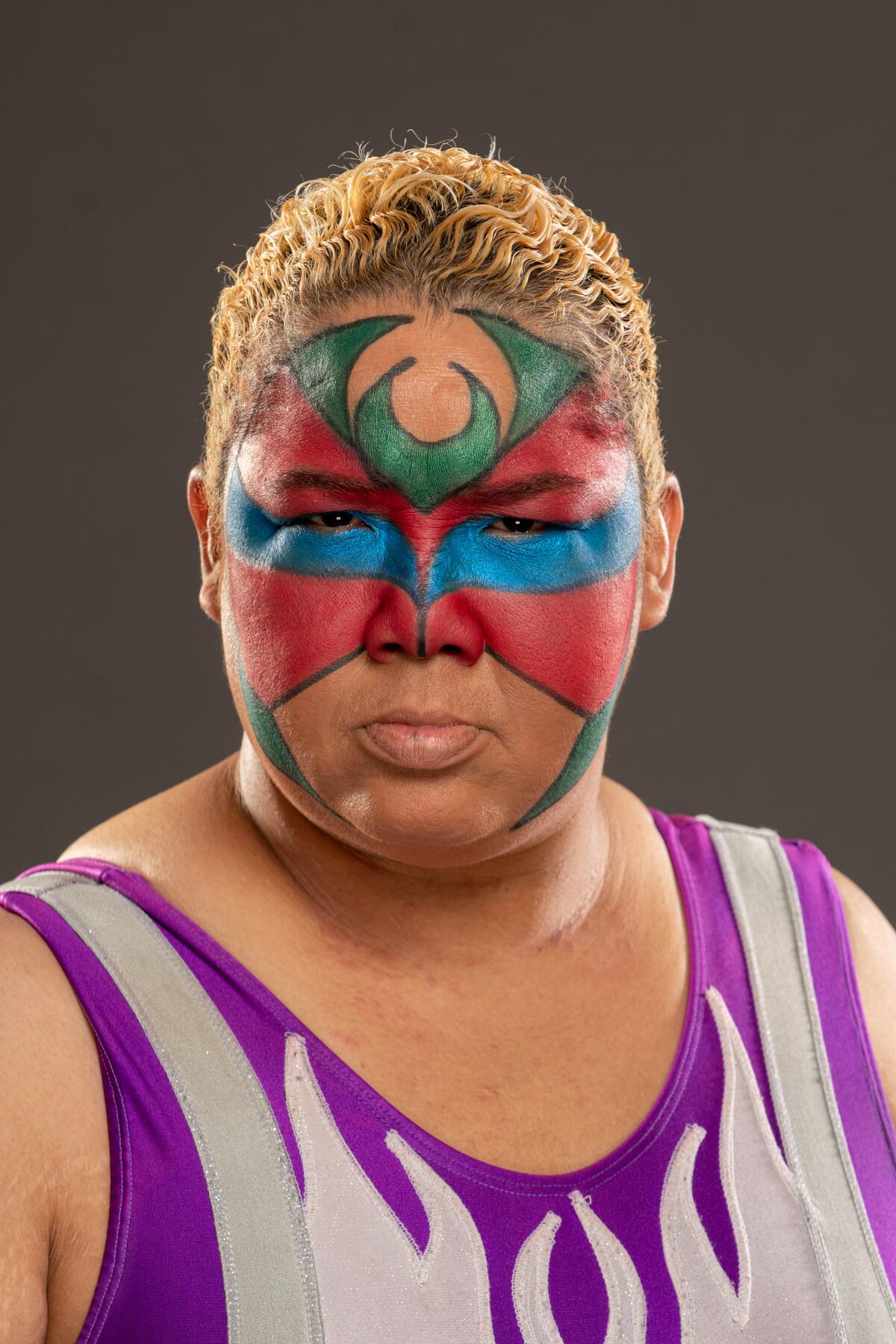
Kota Ibushi, one of the most decorated and acclaimed performers of his generation, took down Canadian phenom Bailey at Josh Barnett’s Bloodsport 9 Thursday night. It not only marked Ibushi’s first stateside appearance since the pandemic, but also his first match since declaring himself a free agent after a controversial departure from New Japan Pro Wrestling, where he’d worked as a main event contender for over a decade.
The former tag team partner of AEW star Kenny Omega, Ibushi is one of the few wrestlers who engages in comic antics in the ring — wrestling sex dolls, for example, or shooting fireworks out of his backside — without sacrificing any of his serious athletic credibility. Before he became a more recognizable star, Ibushi cut his teeth for Dramatic Dream Team (DDT), which found an international cult following thanks to its unique blend of Jackass-like stunts and serious grappling.
Since its emergence in the 2000s, DDT set the blueprint for Japanese indie wrestling to come, and its influence can be seen all over American wrestling as well — there’s a direct line from WWE’s Sami Zayn doing absurd stunts for DDT, like wrestling while paddling a canoe down a river, and his hijinks-heavy Rube Goldberg machine of a match with Johnny Knoxville at WrestleMania last year.
One of DDT’s breakout stars is MAO, a technically dazzling performer who mixes a punk rock energy and bold sense of humor with nimble grappling. He has already made several trips across the Pacific in 2023 and says that even if the audience’s love of wrestling is deep in both the United States and Japan, traveling internationally allows for different kinds of connections.
“I like foreign fans because I like hearing their chants,” MAO explains. “Japanese fans have a different style of cheering and call out our names, while American fans are very honest. If something is bad, they say it’s bad. If something is great, they say it’s great.”
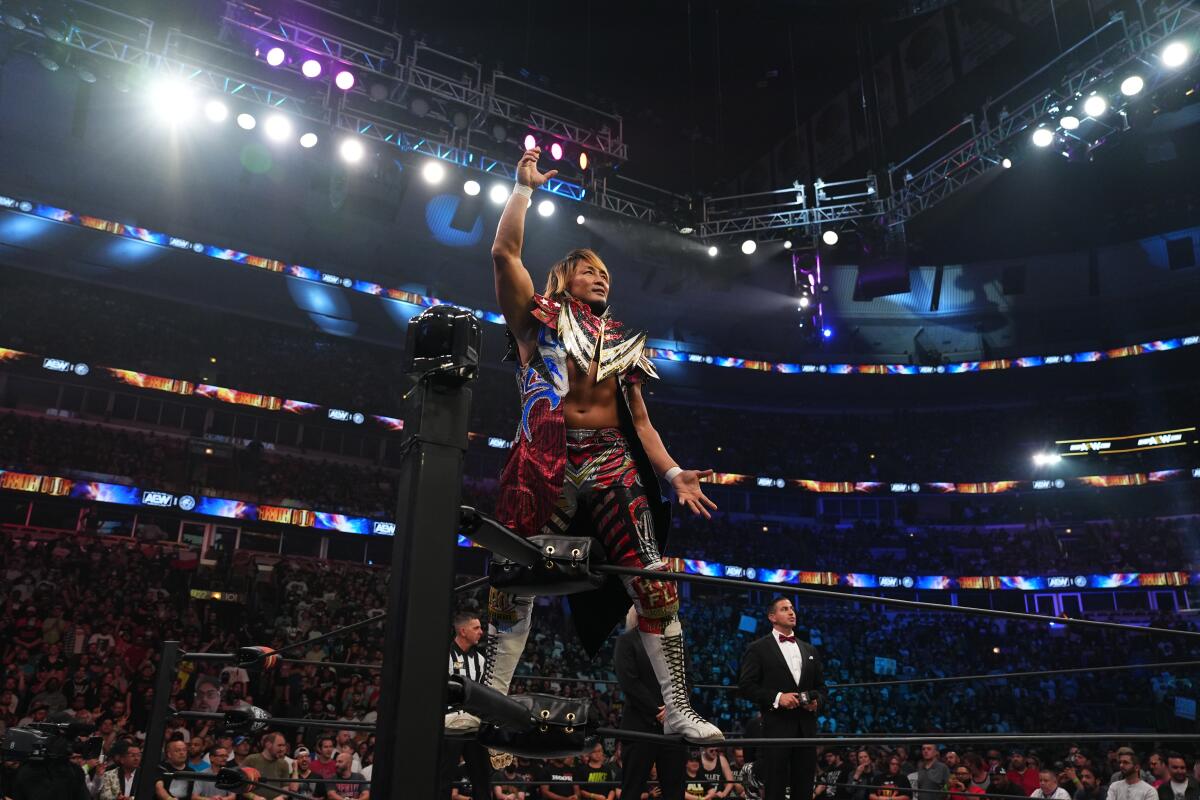
This weekend presents a rare opportunity for American fans to receive the full DDT experience, with a full-blown takeover of the Ukrainian Cultural Center. In arguably one of the most intense matches of the weekend, AEW star and indie pioneer Eddie Kingston teamed up with Jun Akiyama, one of Kingston’s personal heroes and an indisputable legend of Japanese strong style, to take on the brooding, gothic Daisuke Sasaki and KANON.
On Friday night the DDT roster squares off against the outlaws of Game-Changer Wrestling (GCW), an American indie promotion that gained increasing momentum at the height of the pandemic. Matchups include Dark Sheik, the godmother of the Bay Area’s underground wrestling scene and the creative force behind the endlessly inventive DIY promotion Hoodslam, taking on pop idol Saki Akai. Meanwhile, Bay Area-based wunderkind Starboy Charlie stares down Kazusada Higuchi, a former sumo wrestler and decorated champion with an old school strongman look.
WrestleMania Goes Hollywood is coming to SoFi Stadium in Inglewood on Saturday and Sunday. Here’s our coverage ...
Tokyo Joshi Pro Wrestling (TJPW), DDT’s sister promotion, has exploded since its founding in 2012, and will make its American debut on March 31 as well. The dramatic growth of TJPW, from underground shows a decade ago to pay-per-view today, speaks to the rise of Japanese wrestling fandom in the United States as well as a greater respect for women’s wrestling. American performers on “TJPW Live in Los Angeles” include Trish Adora, Billie Starkz, and “The Nonbinary Nightmare” Max The Impaler, all of whom have been making waves on recent tours abroad in Japan, alongside TJPW stars like Miyu Yamashita and Yuka Sakazaki.
From MAO’s vantage point, DDT has found a growing worldwide audience not just because of its unique style, but also because of how devoted the talent is. “We do it all: comedy wrestling, lucha libre, hardcore,” he adds. “And we always give 100%.”
As a form long predicated on the exchange of talent between countries, wrestling was hit particularly hard by restrictions on intercontinental travel over the last few years. Now that pandemic-era guidelines have eased, there’s a mutual enthusiasm on the part of performers, who are eager to get out in front of crowds and introduce themselves to new audiences, and fans themselves, who are itching like never before to see wrestling live and in the flesh. But the influx of Japanese talent this Mania Weekend feels particularly unique to Los Angeles. Because of California’s relative proximity to Japan, the L.A. wrestling scene has a rich history of collaboration with Japanese promoters that goes back decades.
Los Angeles Times social media editor Stacey Leasca stepped inside a Bay Area independent wrestling outfit to meet the participants behind the theatrical personas -- and to step into the ring and see what it takes to be a truly slammin’ wrestler.
“In the 1960s, Los Angeles was a very important place for Japanese wrestlers,” explains Dave Meltzer, one of the foremost historians of professional wrestling and a longtime California resident. “Back then, all the major papers and magazines in Los Angeles covered wrestling and published match results, so if you were a Japanese wrestler who came to the United States to work, the press coverage and photographs could make you seem like a worldwide star back in Japan.”
At the time, wrestling in Japan was dominated by the Japan Pro Wrestling Alliance, founded in 1951 by national hero Rikidozan — for the first several years of its existence, the JWA collaborated and exchanged talent with the National Wrestling Alliance, the main governing body for pro wrestling in the United States. JWA eventually broke from the NWA to work with the new Los Angeles organization Worldwide Wrestling Associates, which had just split from NWA itself. In the 1960s, when the “world title” was spoken of in Japan, it wasn’t the more famous NWA Title but rather the world heavyweight title of the WWA. Said title was defended both abroad and in Los Angeles’ Olympic Auditorium — Japanese networks such as TV Asahi even broadcast title matches from the city’s fabled sports venue, which was the epicenter of Los Angeles wrestling for decades.
Los Angeles wrestling’s splashy news coverage went both ways: It helped anoint American wrestlers such as “Classy” Freddie Blassie and The Destroyer as bonafide pop culture icons in Japan. “If you were covered in those magazines, you were a star in Japan on Day 1, before you even arrived,” says Meltzer. Because of his tremendous box office success in Los Angeles and his frequent appearances in wrestling magazines, legendary Mexican luchador Mil Máscaras was poised for stardom overseas, and his distinctive mask and colorful cape gave Japanese audiences their first glimpse of lucha libre.
Known for embracing camp, silliness and an element of awe, the indie lucha libre company Lucha VaVoom rings in two-plus decades of high-flying fun with a pair of Valentine’s Day shows.
By the 1990s, a whole generation of Japanese performers such as The Great Sasuke and Último Dragón had grown up with luchadores Máscaras, Dos Caras, and Gran Hamada, and would blend hard-hitting Japanese athleticism with the acrobatics of lucha libre. The result is usually referred to as lucharesu: a term combining lucha libre and “puroresu,” the Japanese term for pro wrestling.
Lucharesu found its way back to Los Angeles around then, where it deeply influenced the high-flying antics of cult favorite Pro Wrestling Guerilla, the Reseda-based promotion that bred future superstars of AEW and WWE like The Young Bucks, Adam Cole, and Kevin Owens. Even after the demise of World Wrestling Associates in greater Los Angeles, Japanese superstars like Antonio Inoki and Atsushi Onita ran shows in the area in the 1990s, bringing together a distinctly multicultural audience of Mexican lucha libre fans, Japanese immigrants, and American wrestling enthusiasts.
The pro wrestling landscape may have changed drastically over the decades, but Los Angeles continues to inhabit a singular position as a cultural waypoint of wrestling culture, especially between Mexico, Japan and the United States. This year’s Mania Weekend is a testament not only to the city’s unique history as a wrestling epicenter, but also provides indelible evidence of wrestling’s inherent internationalism.
More to Read
Go beyond the scoreboard
Get the latest on L.A.'s teams in the daily Sports Report newsletter.
You may occasionally receive promotional content from the Los Angeles Times.
